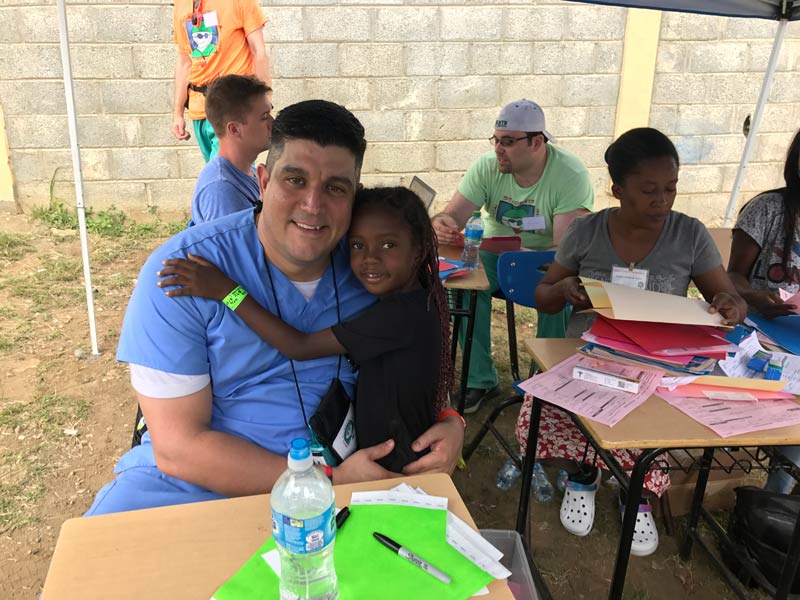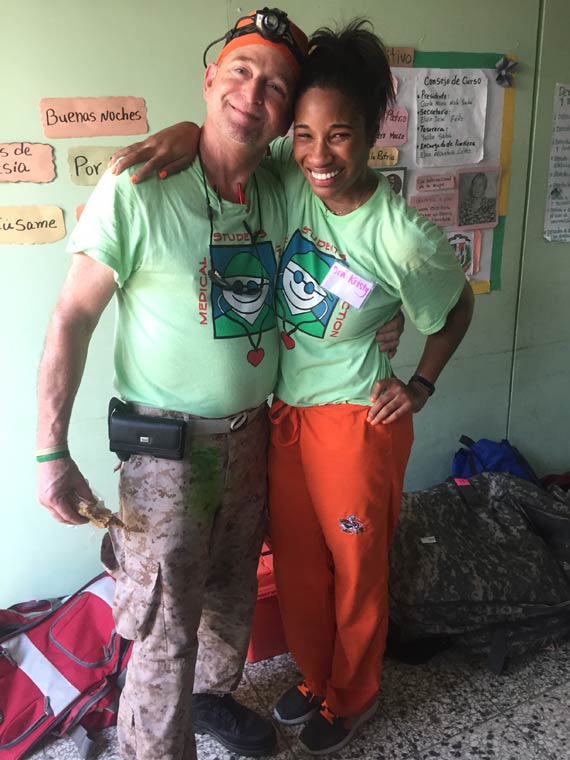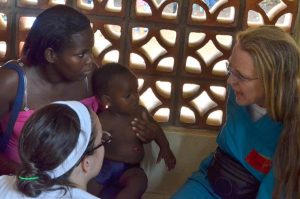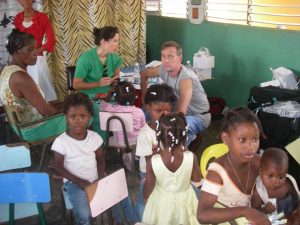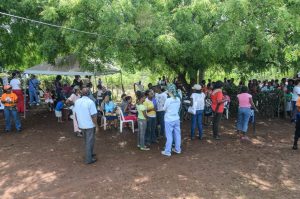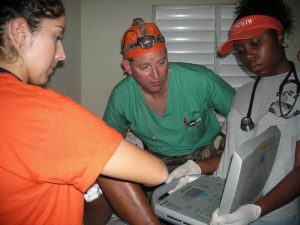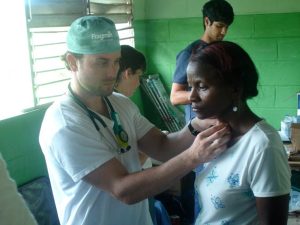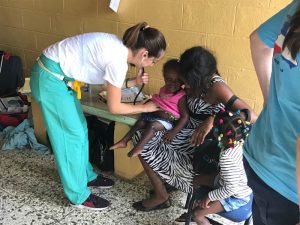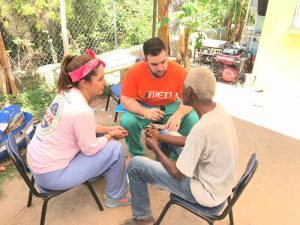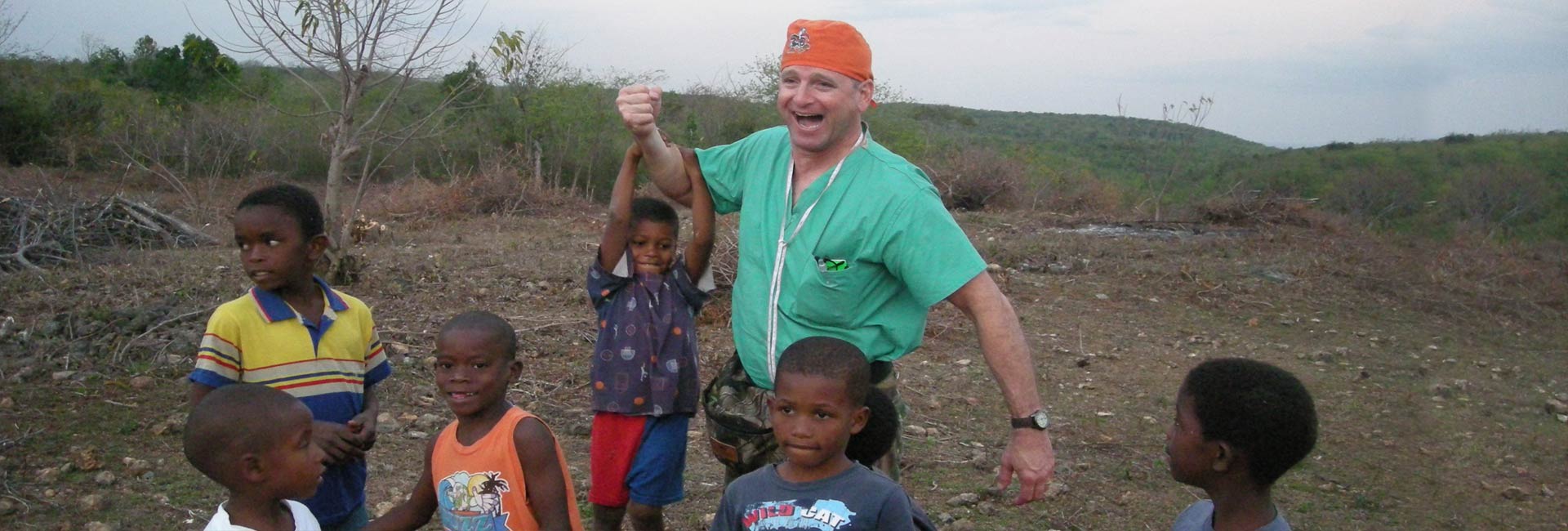
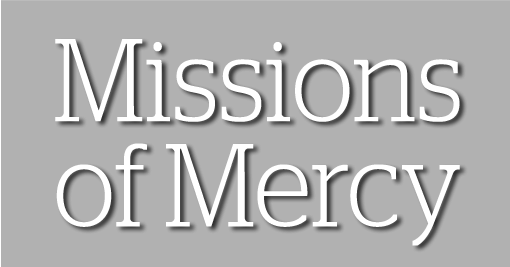
For 14 years, Medical Students in Action has brought health care to rural villages in the Dominican Republic.
Most travelers who take the two-hour flight from Miami to the Dominican Republic, the Caribbean’s most popular tourist destination, are bound for the country’s glittering resorts. But every year during spring break, a large contingent of medical and public health professionals and students head instead into the interior of San Cristobal Province, in the west-central part of the country, to provide a wide variety of services to the poor living in the rural villages found there.
The trip is organized by Medical Students in Action (MSA), a nonprofit that grew out of the 2004 inspiration of Mikel Llanes, M.D. ’07, then a first-year student at the University of Miami Miller School of Medicine. Llanes had visited the Dominican Republic during high school, and had observed the widespread need for medical care. He recruited one of his professors, Steven Chavoustie, B.S. ’77, M.D. ’81, an OB-GYN in private practice who is a voluntary faculty member, to join the mission he was assembling.
“Another physician and I joined Mikel and 14 other medical students on the trip,” says Chavoustie. “We saw 500 patients that week and worked until 10 p.m. every night.”
Chavoustie recruited numerous friends from private practice and began building MSA — a tax-exempt 501(c)(3) that relies solely on donations for sustainability — into the much larger organization that it is today. He is MSA’s medical director and the veteran of all 14 of its missions.
About the Photo
Dr. Steve Chavoustie, B.S. ’77, M.D. ’81, an OB-GYN in private practice who is a voluntary faculty member at the University of Miami Miller School of Medicine, plays with local children outside a clinic in rural Dominican Republic.
Join the Conversation:
Follow on
Twitter:
UM Miller School of Medicine, @umiamimedicine
University of Miami, @univmiami
UM News, @univmiaminews
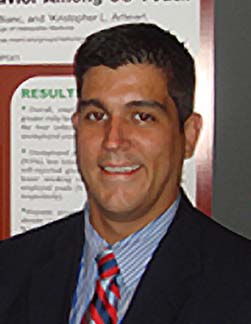
In 2008, he invited Alberto Caban-Martinez , B.S. ’01, Ph.D. ’11, then a medical/doctoral student, to join that year’s medical mission.
“You don’t have to venture far into the Dominican Republic to find impoverished people with serious health needs and few medical resources,” says Caban-Martinez, who today is assistant professor in the Miller School’s Department of Public Health Sciences and MSA’s faculty mentor for M.D./M.P.H. students. “Our missions help fill that gap, and over time we have made a difference in the lives of a great many people.”
“This year, we had 36 doctors representing a variety of specialties,” says Chavoustie. “A significant number of them began going on the missions as Miller School students and never stopped. We had 46 medical students with us this year, as well as a group of Spanish-speaking high school students who are interested in studying medicine and work as interpreters. With a group that large, we were able to see approximately 2,500 patients during the week.”
The growing numbers present a logistical challenge for MSA. There are no salaries, and volunteers pay their own way. Nonetheless, arranging air and local transportation, lodging, meals, supplies and security for 120 people requires a great deal of planning and expense. MSA does it through fund-raising efforts, planning two years in advance. Chavoustie says it is well worth the effort, because as MSA’s numbers have grown, so has its relationship with the people in the villages it serves.
“Now when we arrive, the patients are waiting for us,” says Chavoustie. “Their knowledge of their own health care has grown, too. The first year we went, they didn’t know what dental floss and birth control were. Now they arrive at registration with their empty pack of last year’s pills asking for another 12-month supply. Several patients have requested their Pap smear results via social media. Along with this growth in awareness has come a dramatic improvement in overall health.”
(Story continues after photo gallery)
The group’s work doesn’t happen in a vacuum and is made more efficient by coordinating with the existing public health infrastructure in the areas MSA visits. Caban-Martinez and a group of students in the Miller School’s M.D./M.P.H. program typically travel to the Dominican Republic an additional three times a year to meet with regional officials. Last year saw the beginnings of a community health worker program that can provide services after MSA has left. One of those accompanying Caban-Martinez has been fourth-year Miller School student Sarah King.
“I have been to the Dominican Republic six times, and I have noticed that it is tough not to reinvent the wheel with new medical students every year,” says King. “I came up with the idea of a four-week internship there during the summer to further optimize our presence.”
The first intern was Anna Zeira, a second-year M.D./M.P.H. student who was in the Dominican Republic last summer.
“The first two weeks I shadowed a program manager in the local public health department,” she says. “On the weekends, I visited public health projects. The last two weeks I spent with doctors and community health workers at one of the government-funded clinics. I learned how the public health system is set up in the San Cristobal area and wrote a report outlining ways MSA could link with local resources for greater impact.”
With the community health worker program now up and running, MSA’s next project is a clinic where people in the villages can see a health care provider. The organization’s work may be life-changing for the patients it serves, but it also has long-lasting impact on the volunteers.
“For me, one of the privileges is to watch these students — who at first may be wide-eyed seeing the differences from their world in Miami — roll up their sleeves and get to work,” says Caban-Martinez. “Even first-year students are able to take what they have learned and use it to meet real-life needs.”
It is the same for the physicians, says Chavoustie.
“When we are in the DR, and I look at my colleagues, all I see are smiles,” he says. “We can do the simplest procedure and make a marked difference in someone’s life. It’s hard work, but it’s really happy work.”
- ROBERT S. BENCHLEY / UM News
